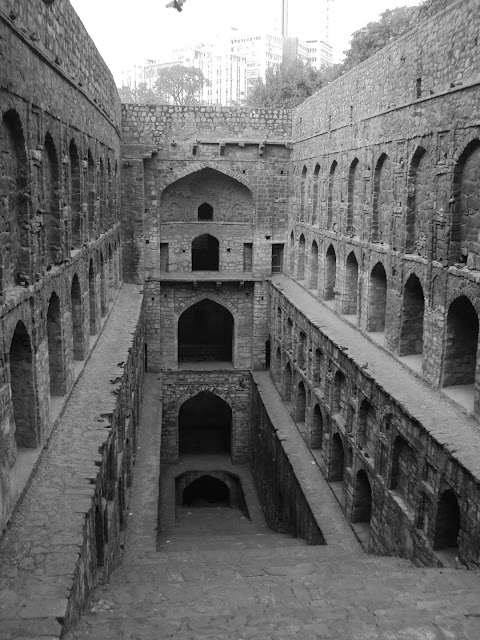The Connaught Place is often regarded by many as one of the nerve centres of Lutyen’s New Delhi. The bustling colonnades are full of activity – street vendors selling their stuff, ice-cream wallahs, pirated book sellers, couples walking hand in hand, youngsters’ window shopping, tourists soaking in the atmosphere…it is the quintessential activity hub buzzing with energy. Yet, walk a bit down the Curzon Road, past the row of tall high-rise office towers, past Charles Correa’s British Council Library building, turn left into Hailey road and soon you are transported into an entirely different world. It is almost as if you have been magically transported into the Delhi of old, through time, to the Delhi during the Sultanate period. Here, in the backdrop of all the noise and euphoria that exemplifies Connaught Places, lies a serene piece of history – Ugrasen ki Baoli, the stepwell of Ugrasen.
Tucked away in this unassuming location lies this beautiful stepwell, almost forgotten by most Delhiites other than couples in love seeking a quiet space or the odd group of teenage kids who come for taking interesting snaps to upload in facebook. Yet, the grandeur of this structure is unmistakable – an immense flight of steps lead down into the bowels of the earth seeking out precious life giving water, culminating in a 4 storeyed arched structure around the well at the north end.
It is quite amazing that this structure has survived intact the onslaught of time through the centuries. Even today, it exudes a serene monumentality- an air of old world charm, even when the breath of globalisation is just a stone throw away.










Oh my God! It is awesome!
ReplyDeleteAgarsen ki baoli has unique structure which is quite different from the traditional round shape. It has three levels where each level has an arched area, which was used as a resting place. The center of the well has water and the water is also linked to a well dug in a covered platform. The gallery and chambers surrounded walls of Agarsen ki baoli are carved profusely. These chambers used to become cool and provide quiet retreats during summers. Check out more about Agrasen ki baoli.
ReplyDelete